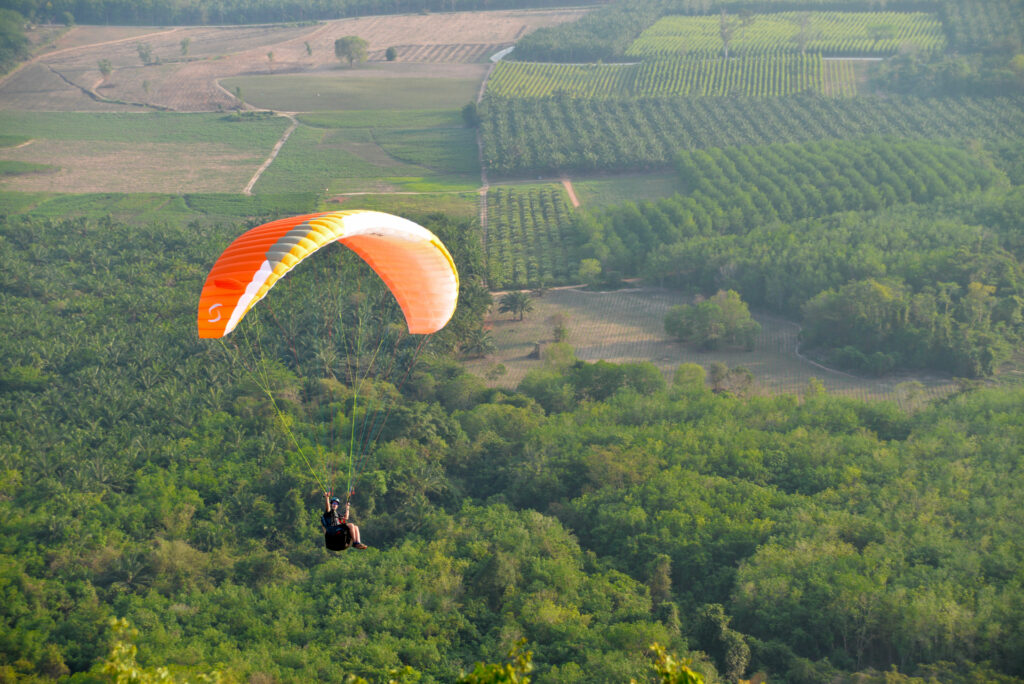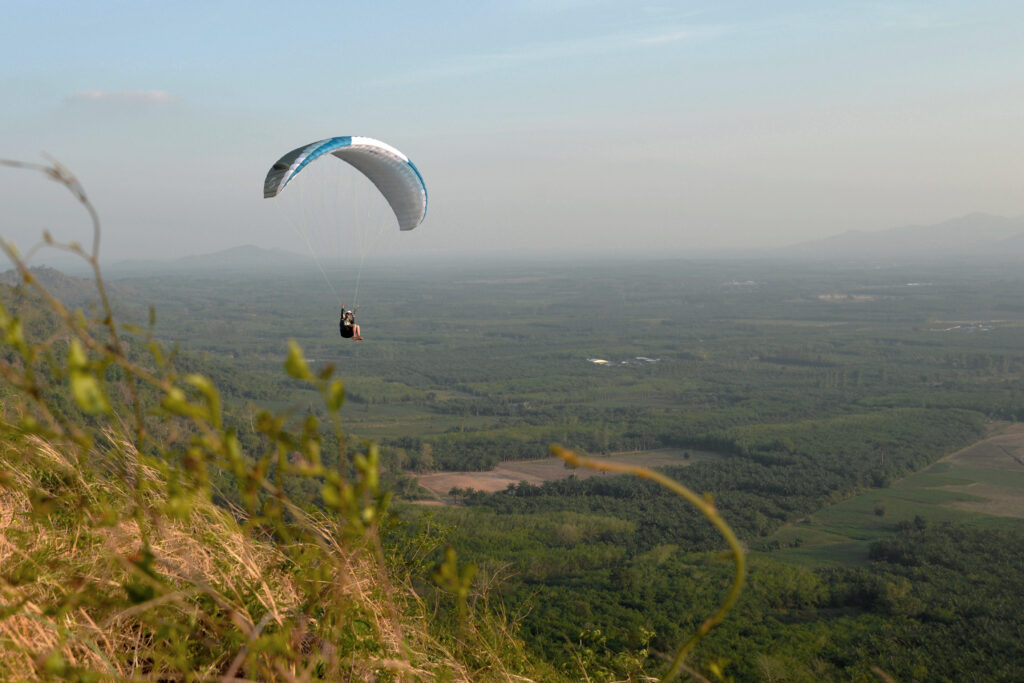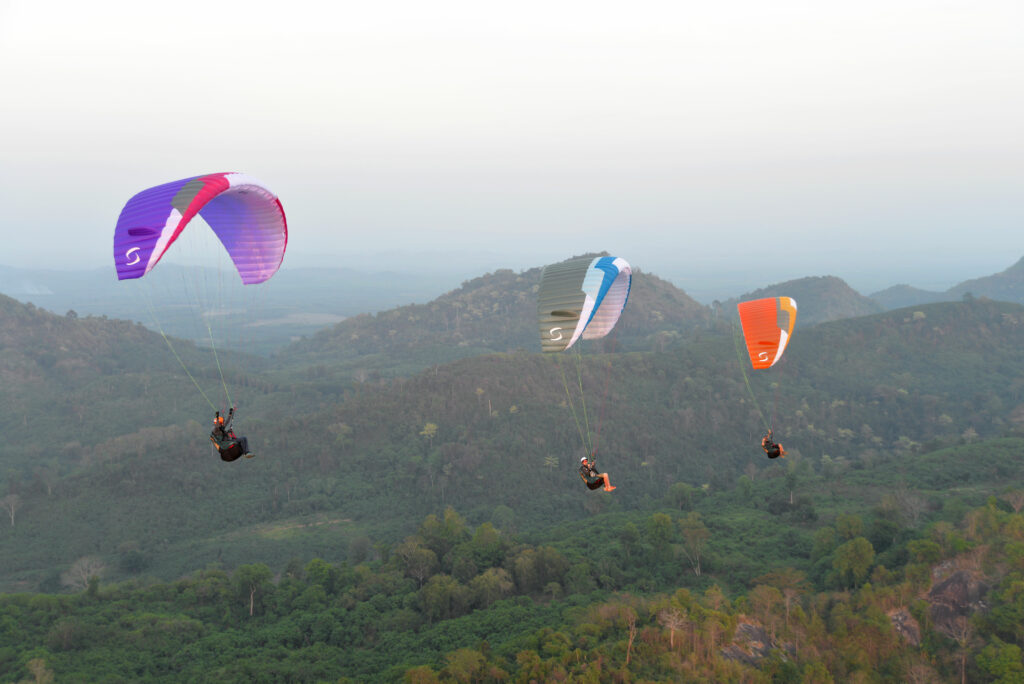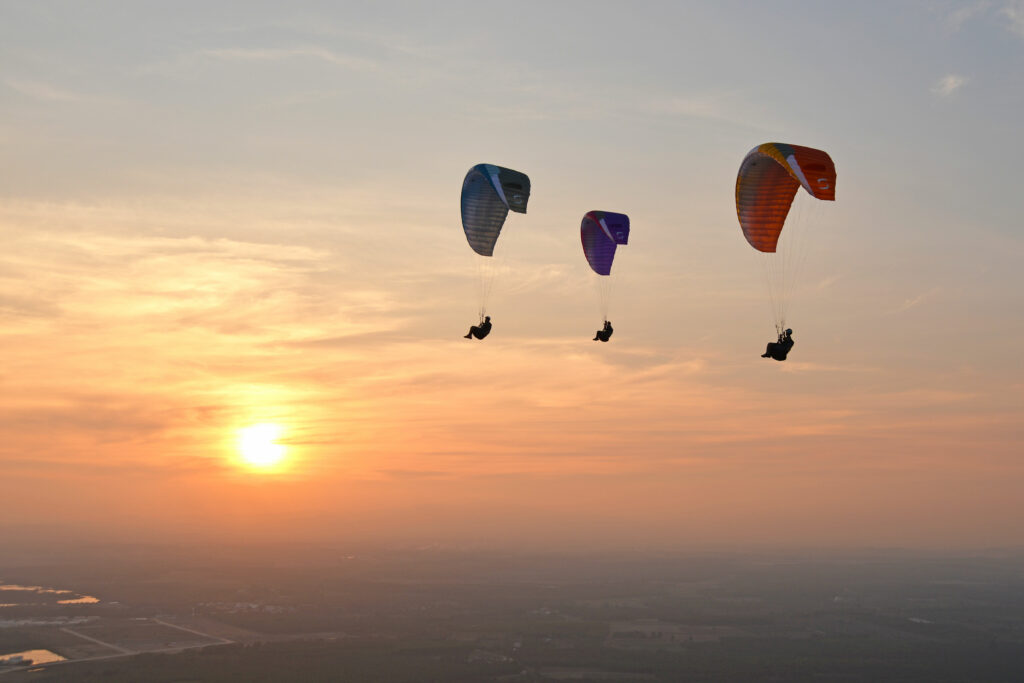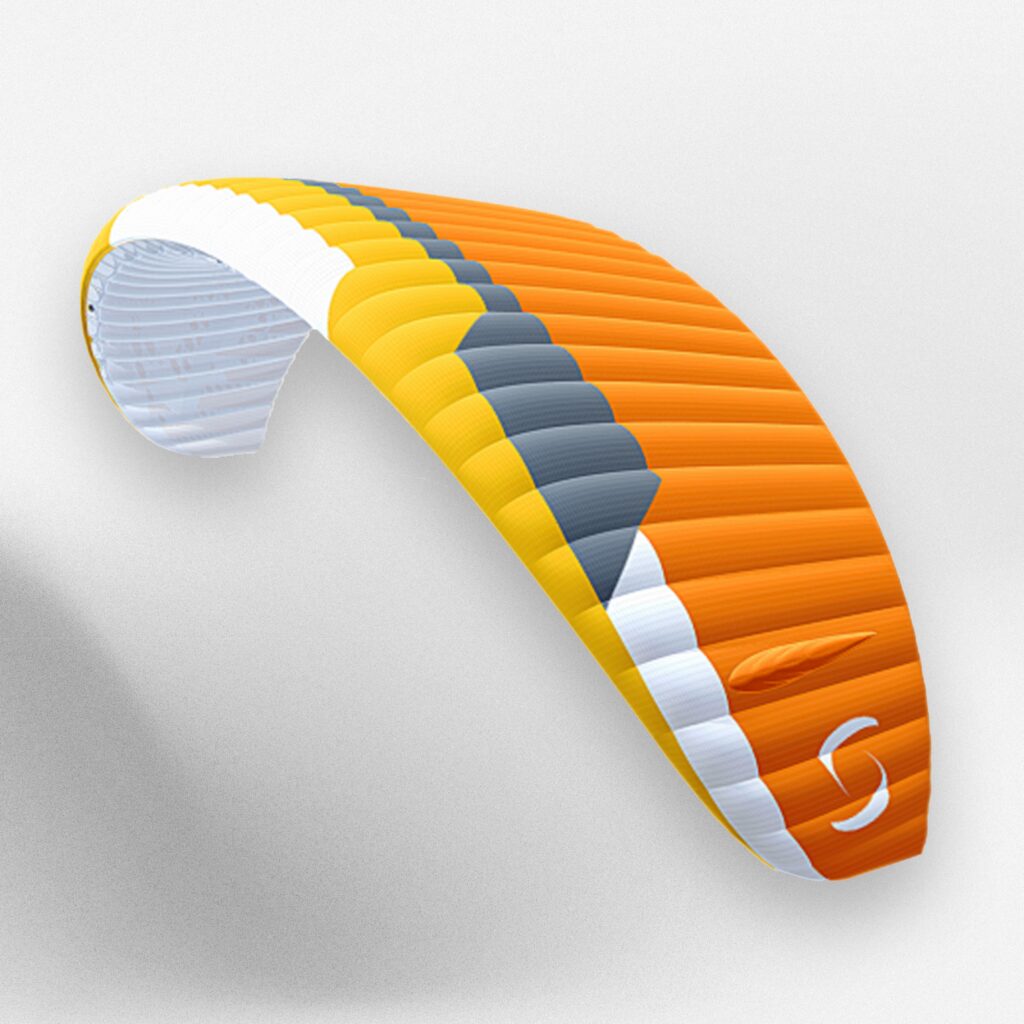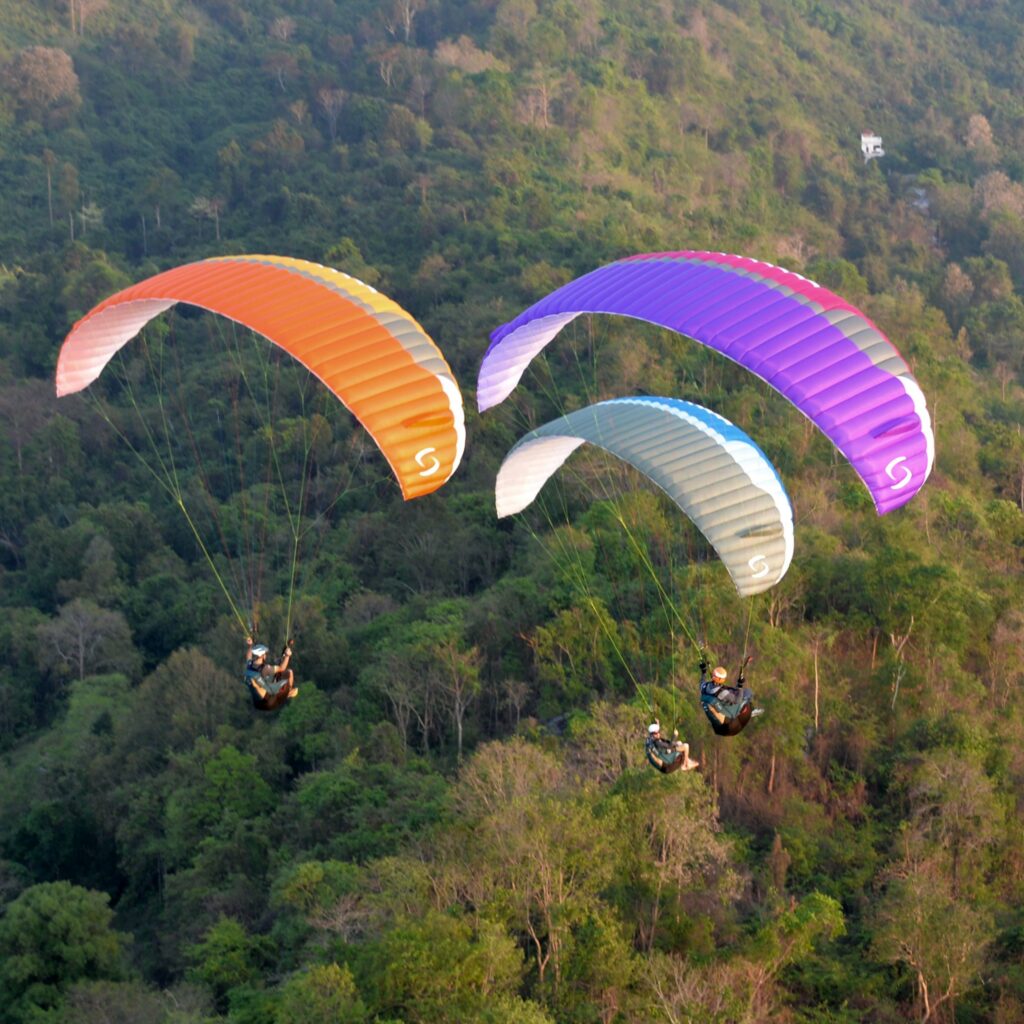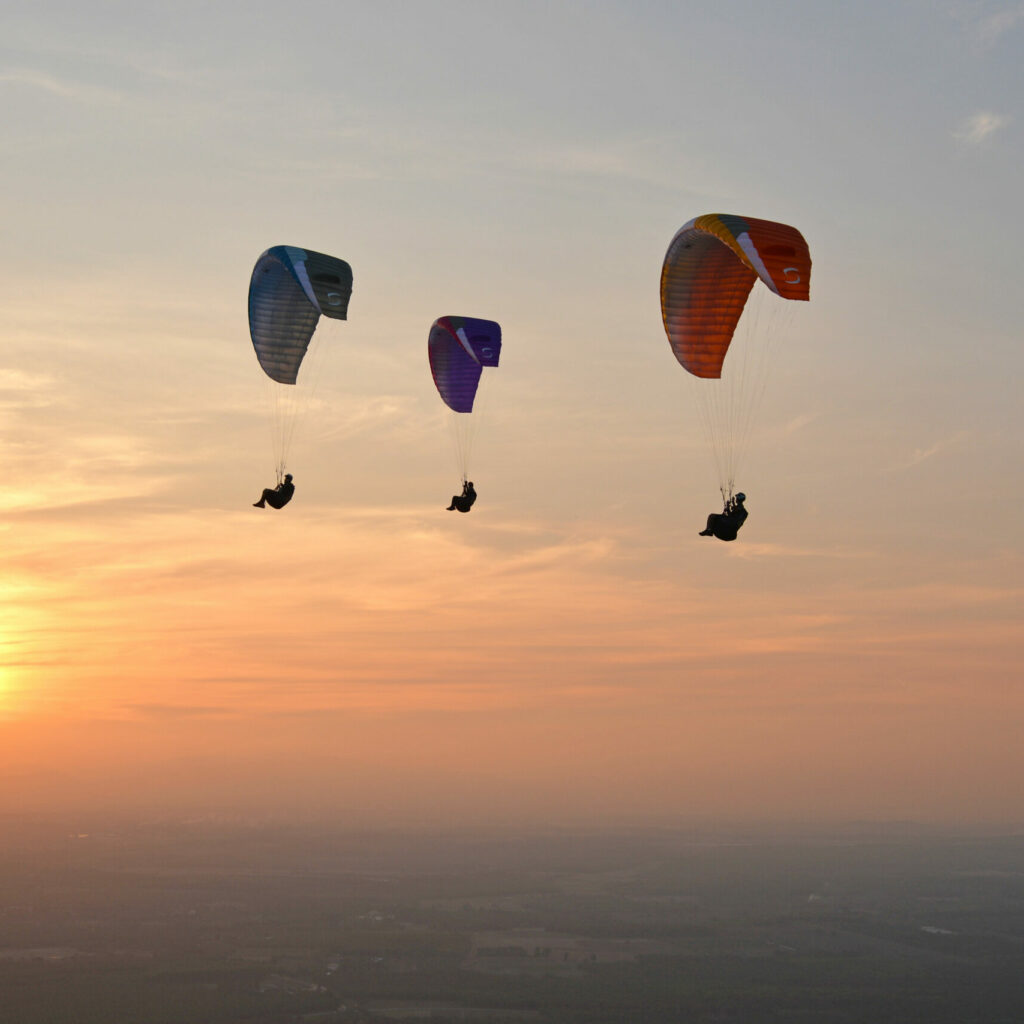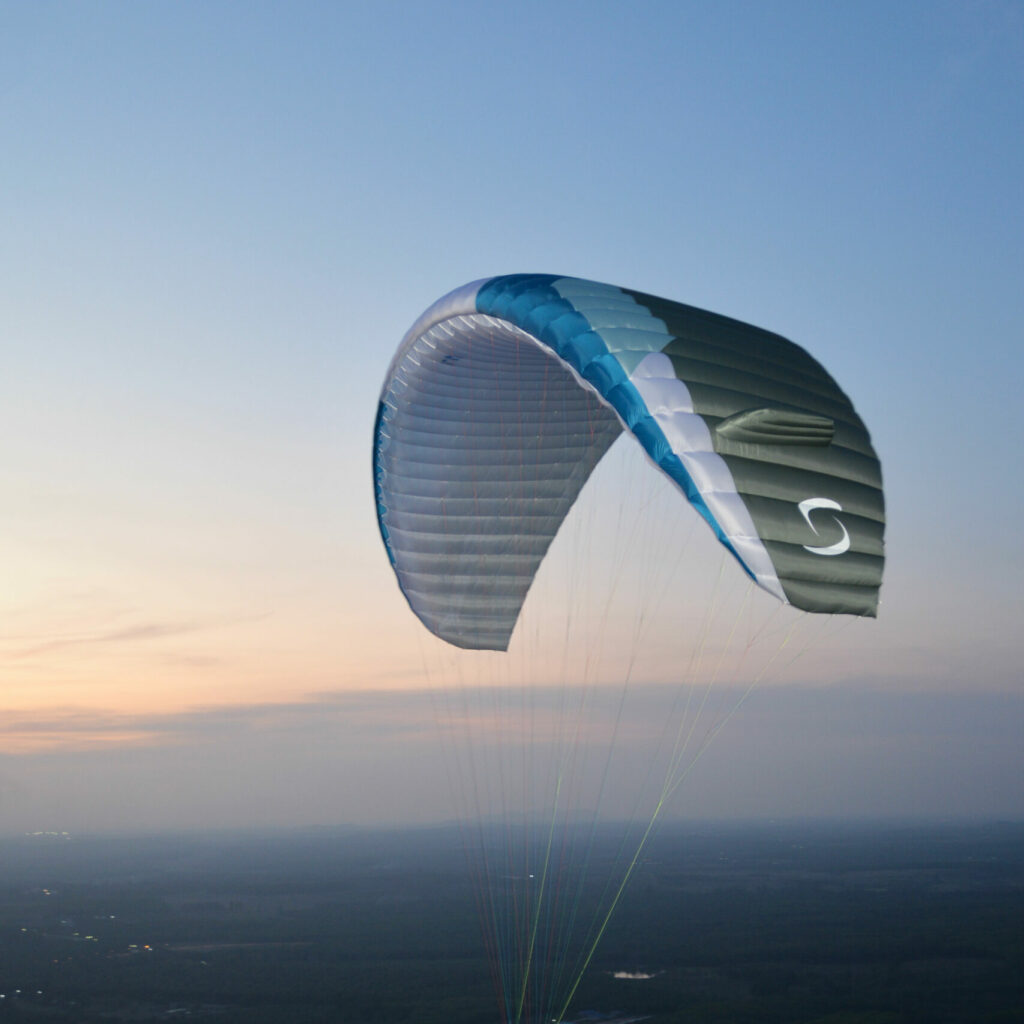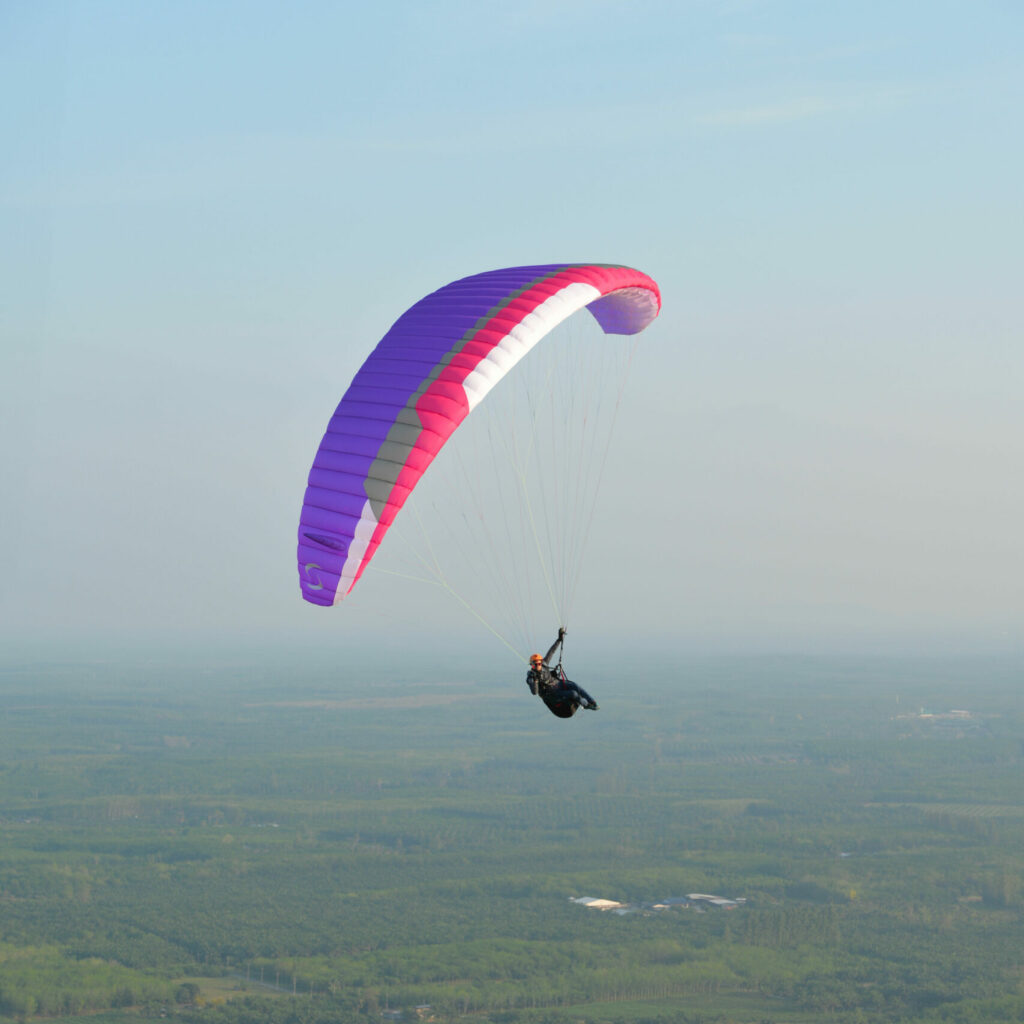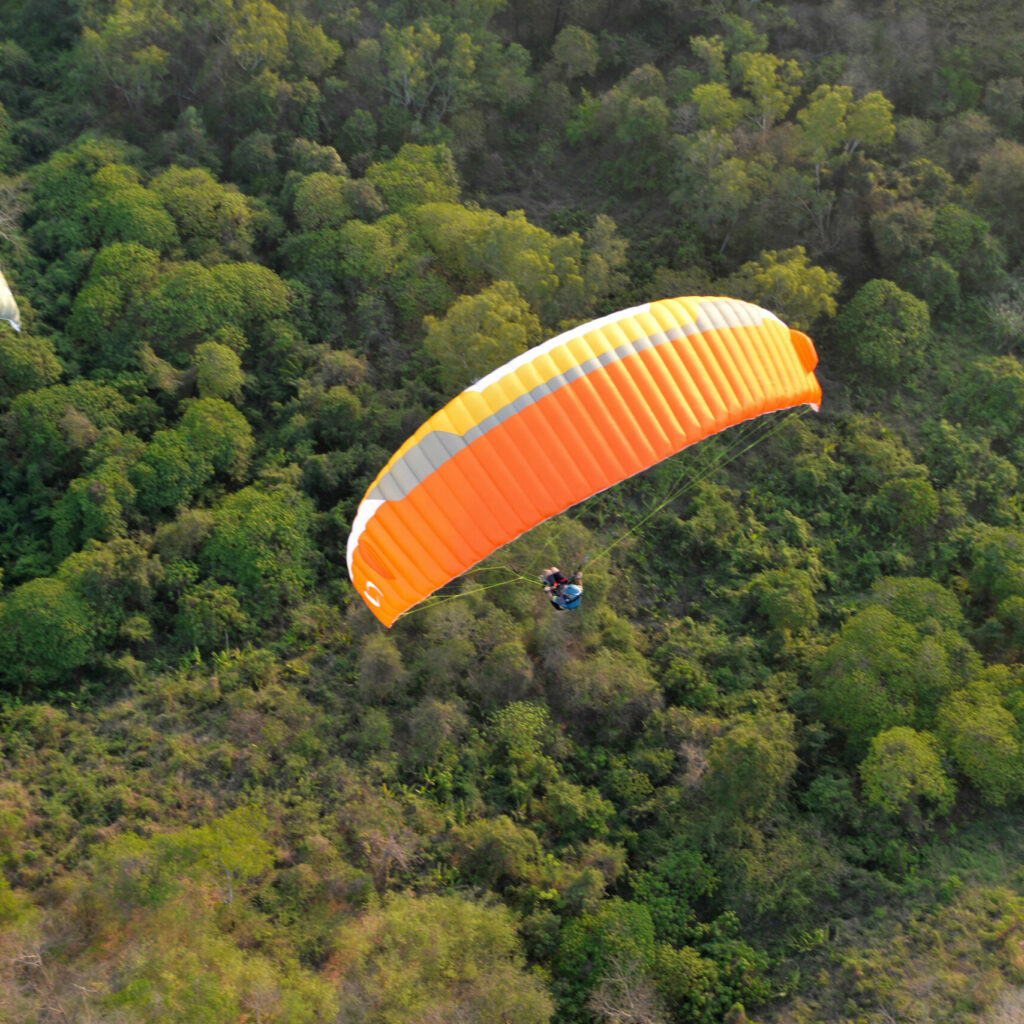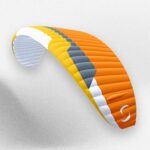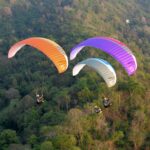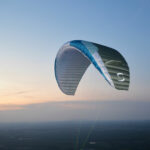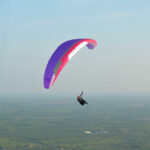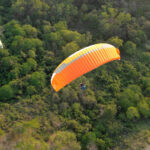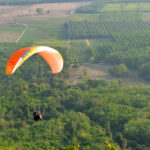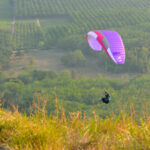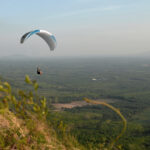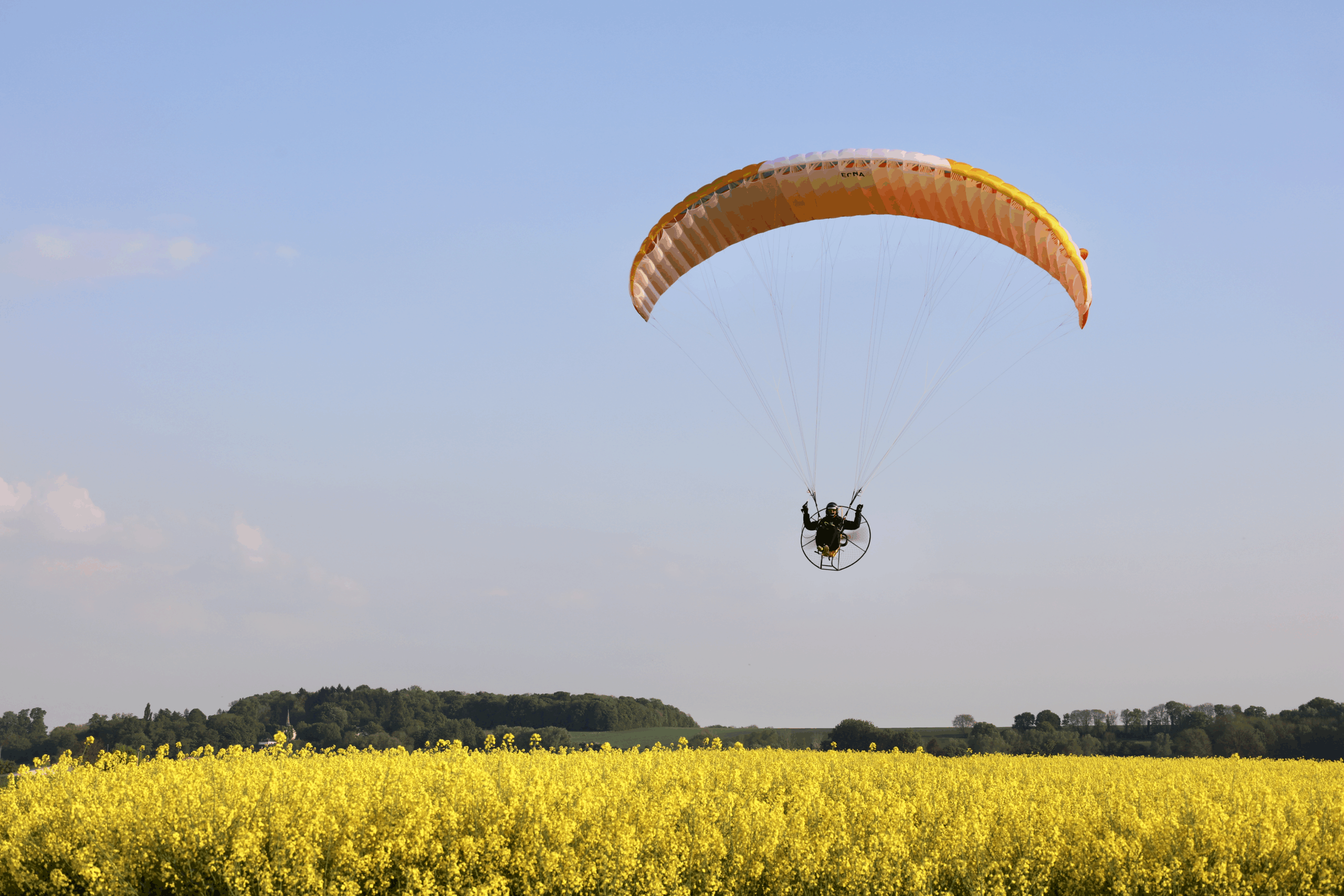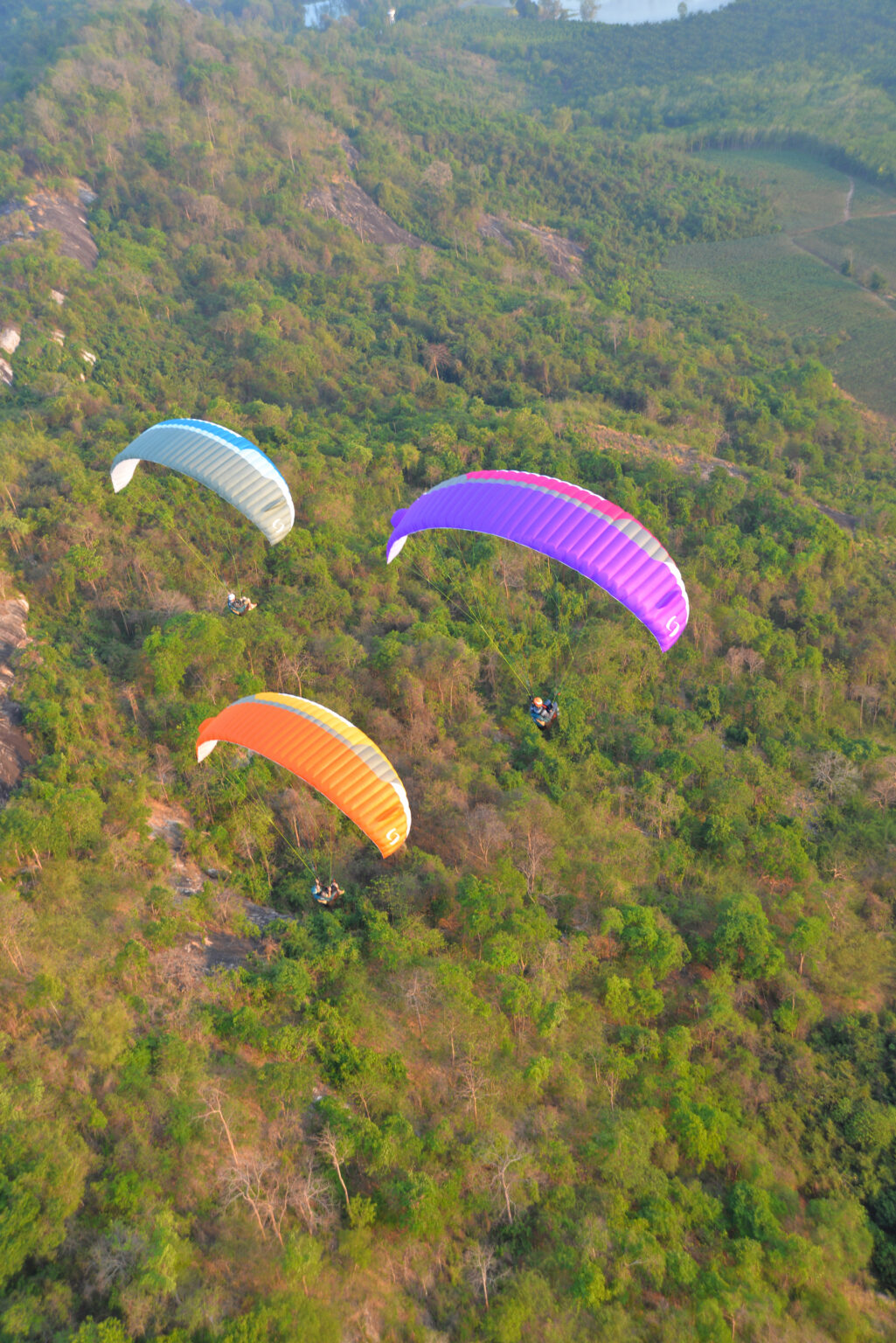
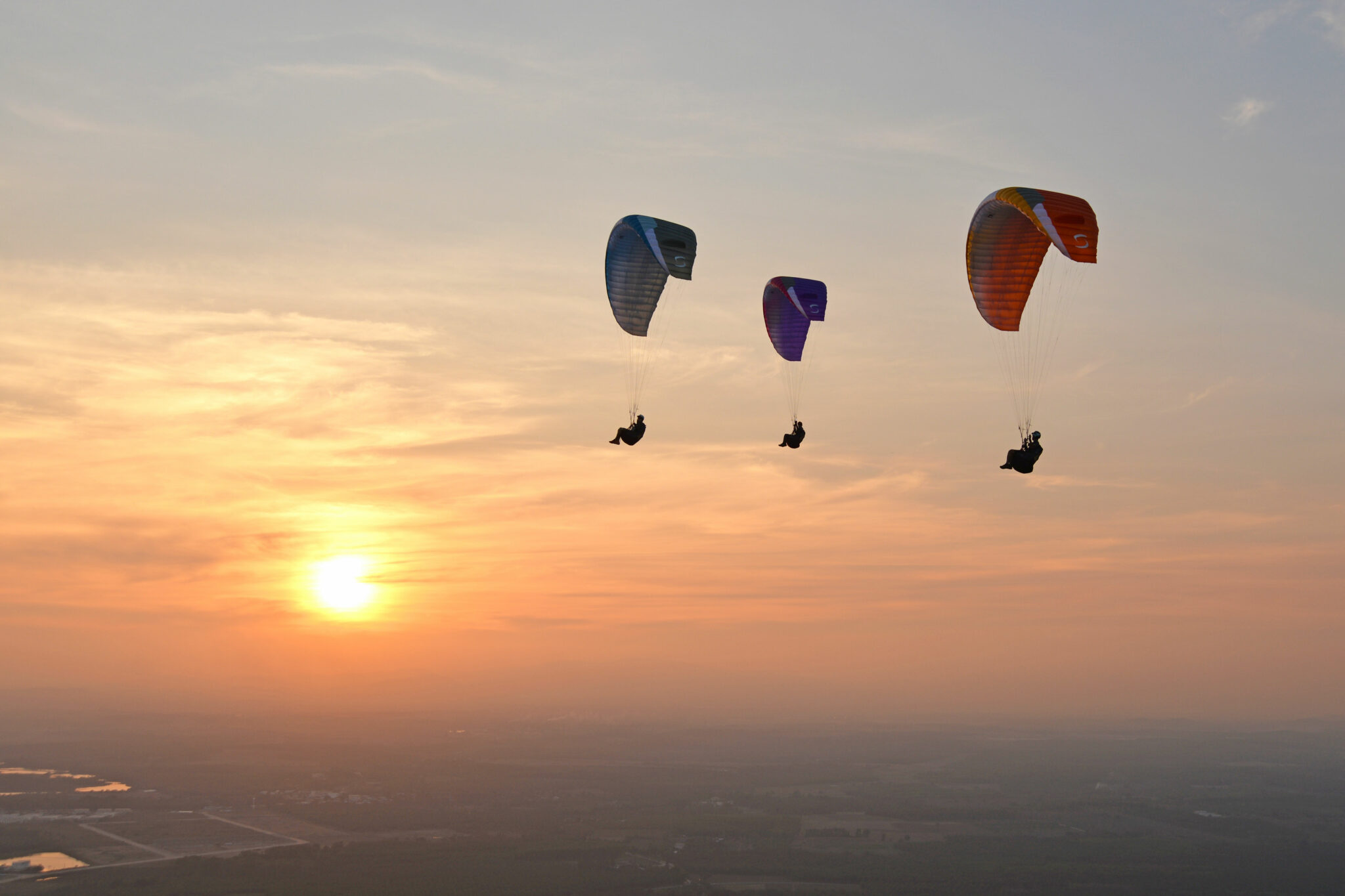
EONA 4
Smooth and intuitive, this glider inspires confidence right from the start. Start and progress with confidence.
Sizes M, ML and L are approved for paramotor Use .
Weight: from 4.2 kg
Colors: Ice, Lilac, Oasis
-
On-site flight
-
Cross Country
-
Hike and fly
-
Tandem
-
Occasional
-
Regular
-
Professional
-
Novice
-
Intermediate
-
Seasoned
Accessories included

Speed bar

backpack

Inner bag

Repair kit
- rucksak TREK2 - 130 L
- Internal bag and Strap compression
- speed bar 2B rigid
About EONA 4
TheEONA 4 is both the ideal first glider for paragliding pilot beginner pilots and an ideal tool for the instructor accompanying them.
Optimized inflation, uniform glider rise and solid structure... Special attention has been paid to the glider structure and canopy to maximize the level of passive safety and make learning as accessible as possible.
Thanks to the R&D efforts of our team of designers, the EONA 4 benefits from innovations borrowed from the methods of design of high-performance gliders, resulting in a glider The school is solid, reassuring and fun to fly.
Whether it's by adding winglets or redesigning its Ribs / roads and diagnoals, the EONA4 sees its internal structure as well as its vault completely reworked, offering the pilot beginner one glider intuitive and forgiving. The pilot will feel safe while the instructor will have no trouble anticipating the behaviour of the glider in all aerological conditions.
Have unlimited fun with the EONA 4 on the school slopes and in the air! Materials have been carefully selected for maximum durability. Similarly, the more even distribution of loads and tensions on the Airfoil and the dirt evacuation system guarantee a long Life span life for your paraglider.
Approved for paramotoring in sizes M and ML, the EONA4 is designed to follow you on all your adventures, whether motorized or not! Easy to handle and ultra-intuitive, this all-terrainglider helps you gain confidence flight after flight, whether paraglider or paramotoring.
TheEONA 4 is the ideal paraglider for discovering the sky with complete peace of mind.
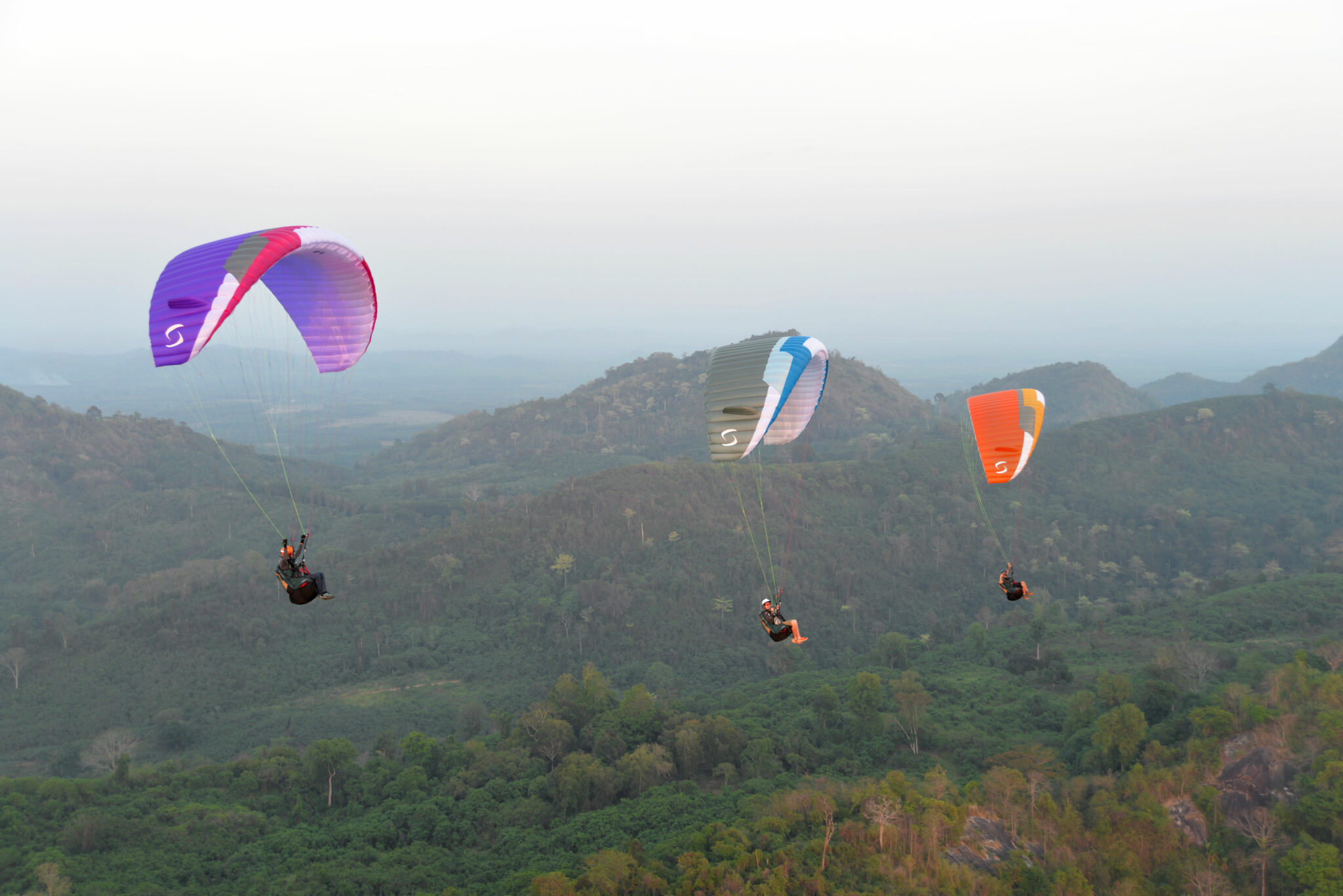
Features
- School and progress
- Autonomous pilot at the end of the course
- On-site flight
- First thermals
- Airfoil babysharknose with Rush unique
- Anti-friction rings
- Ears kit
- End discharge systemglider
Fabrics :
- Extrados: Dominico Tex 30DMF (leading edge) and N20DMF
- Intrados: Myungjin Textile MJ32 MF
- Ribs / roads Suspensions: Porcher Sports Skytex 40 Hard
- Compression band: Myungjin Textile MJ32 HF
- Ribs / roads diagonals: Myungjin Textile MJ32 HF
- Ribs / roads unsprung: Myungjin Textile MJ32 HF
- Reinforcement Ribs / roads Porcher Sports Dacron / Sticky Skytext
lines :
- High: Liros PPSL 120 /DSL 70
- Intermediate: Liros PPSL 120 / DSL 70
- Basses: Edelrid A7343-230 / A7343-190
Brakes :
- High: Liros DSL 70
- High intermediates: Liros PPSL 120 / DSL 70
- Basses: Edelrid 7850X-240
- EN Standard
- LTF Standard
- Class A
3D model
Supair EONA4 - Technical details

Technical Data
| XS | S | M | ML | L | |
|---|---|---|---|---|---|
| Flying weight range (Kg) | 50 - 70 | 65 - 85 | 80 - 105 | 90 - 115 | 105 - 130 |
| Weight of glider (Kg) | 4.2 | 4.55 | 4.9 | 5.2 | 5.5 |
| Number of cells | 38 | 38 | 38 | 38 | 38 |
| Flat area (m²) | 22 | 24.5 | 27 | 29 | 31.3 |
| Projected area (m²) | 18.34 | 20.43 | 22.51 | 24.18 | 26.1 |
| Wingspan (m) | 10.31 | 10.89 | 11.42 | 11.83 | 12.3 |
| Projected span (m) | 8.02 | 8.46 | 8.88 | 9.2 | 9.56 |
| Flat aspect ratio | 4.83 | 4.83 | 4.83 | 4.83 | 4.83 |
| Projected aspect ratio | 3.51 | 3.51 | 3.51 | 3.51 | 3.51 |
| Chord (m) | 2.6 | 2.75 | 2.88 | 2.99 | 3.11 |
| Homologation | EN-A | EN-A | EN-A | EN-A | EN-A |
| Number of elevators | 3+1 | 3+1 | 3+1 | 3+1 | 3+1 |
| Practice | Learning and progress | Learning and progress | Learning and progress | Learning and progress | Learning and progress |
| speed bar (mm) | 130 | 140 | 140 | 150 | 150 |
| Paramotor certification | No | No | Yes | Yes | Yes |
Understanding your glider
The EONA 4 has just one mission: to let you enjoy your first flights. Smoothness and ease are the watchwords of this new generation of EONA, the ideal school glider.
But where does this indulgent behavior come from? Why is the shift gradual? What are winglets used for?
These terms can seem abstract when you're just starting out. That's why we help you understand how your first paraglider was conceived and designed:
THE WINGLETS
This fourth generation is the first to be equipped with winglets on the ends of theglider. These kinds of fins located on the ends of the Airfoil influence the behaviour of the glider and indirectly improve performance.
To guarantee the safety of its pilot, a paraglider dedicated to learning must be stable spiral. Spiral refers to a rapid rotation around an axis close toglider. Although this manoeuvre is deliberately used by the more experienced pilots pilots to lose altitude, it can sometimes be very rapid, generating a strong centrifugal force that needs to be mastered. While pilots must learn to manage this manoeuvre on the more efficient gliders , a glider school should have a tendency to come out of itself without requiring any action on the part of the pilot - this is what is known as spiral stability.
To achieve this, the angle of incidence of the wingtips on paragliders used in schools is increased to generate drag, which slows down the glider if it enters a spiral, causing it to exit and return to flight straight. The disadvantage of this method is that it degrades the straight-line performance of the glider , as the nose-up wingtips constantly create drag.
To enhance the glider's performance, the winglets are aligned with the airflow at flight and do not create drag. It is when the glider enters a spiral that the winglets generate drag, which has the effect of limiting paraglider 's speed in the spiral and helping it to exit and return to flight .
Thanks to the winglets, the performance of your EONA4 is therefore guaranteed while ensuring excellent passive safety with an easy exit from the spiral.

INNOVATIVE STRUCTURE
Whether for performance, comfort steering or maintenance glider, the new internal structure of the EONA 4 makes everyday life easier for the rider.
The internal structure refers to the Fabrics located inside the Cells of the glider and which allow the maintenance of a good Airfoil. This is the "skeleton" of your paraglider.
Cut-outs are made on the inner Ribs / roads . The cut-outs, made using a The cut laser, serve to reduce the glider's weight. A lighter glider will inflate more easily and have less inertia in its movements at flight. Thanks to these features, the EONA 4 is easy to handle and anticipate, whether for the pilot beginner or the instructor accompanying them.
A stripe has been added to the back of the Airfoil, throughout its scope. Its goal is to homogenize the behaviour of theglider on the entirety of its Airfoil. This characteristic of the internal structure helps to limit the deformation of theglider and ensures consistency between the feathers and the center of the Airfoil. The handling of the EONA 4 is quick and obvious for the neo-practitioner.
Finally, the tips ofgliders have been enlarged to increase their strength flight, resulting in feathers that are much more resistant to closure. This design element ensures a High level of passive safety in all aerological conditions.
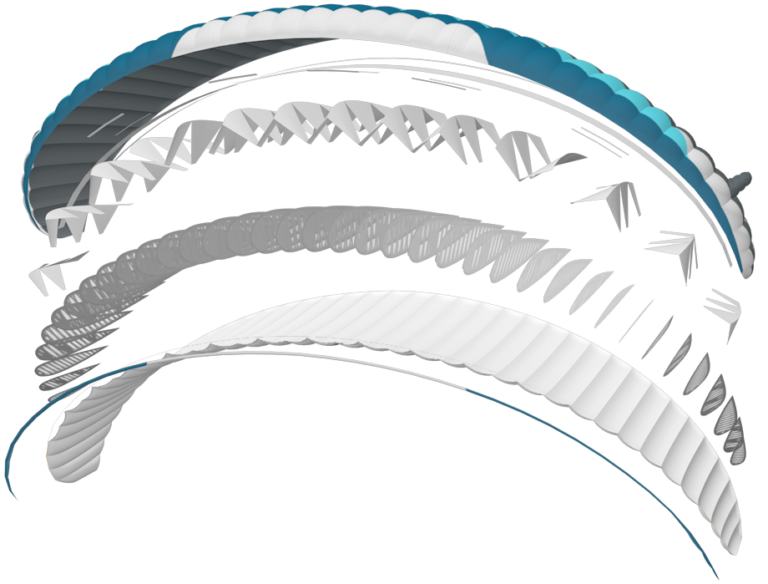
NEW BRAKES
The EONA 4 is also a paraglider of choice for learning to wind your first thermals.
Braking has a direct influence on the glider's performance in flight thermals, so we've chosen a braking system that favors flat turns. This type of braking, more focused on the center of the glider, prevents the glider from diving in the turn, making your first thermal turns easier.
Thanks to this behavior, it's easier to optimizeLift / thermic to enjoy your first thermal laps without difficulty.

MATERIAL DURABILITY
When you're just starting out in paraglider, many hours of inflation await you. Theglider with which you carry out your apprenticeship must be able to withstand all the tests, including repeated friction on the ground when inflating. That's why the designers of the Supair team have individually selected the best materials for each area of the EONA 4 in order to offer a glider that combines durability and lightness.
The Fabrics exposed to friction and subjected to the highest stresses are chosen for their robustness and durability. Parts that are less subject to abrasion benefit from Fabrics lighter weight to reduce the weight of theglider for a smooth ride and a Good ascent of theglider inflation.
Thanks to redesigned diagonals, tensions are distributed more evenly over the Airfoil some glider, you will then benefit from a glider to the design more durable and resistant to deformation, which allows it to maintain its performance at the Line time.
In keeping with this desire to offer a durable glider that can stand up to the vagaries of learning, the internal Ribs / roads ends a few centimetres before the Trailling edge. All glider Cells are interconnected, facilitating the movement of dust and other residues to the Cells wingtips, which are equipped with dedicated openings for emptying the glider.
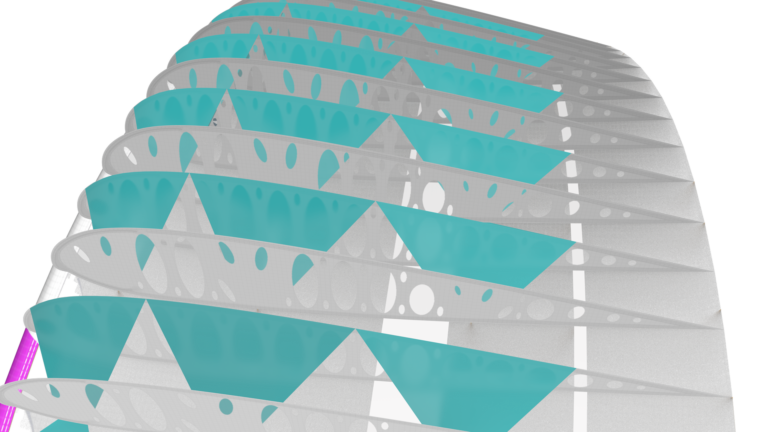
Thanks to a new design for the air inlets, each box is shaped using a unique Rush . In the event of a worn or damaged Rush on the leading edge, the "Easy-to-Remove Rod System" enables rapid replacement, specifically designed for easy, low-cost workshop maintenance.
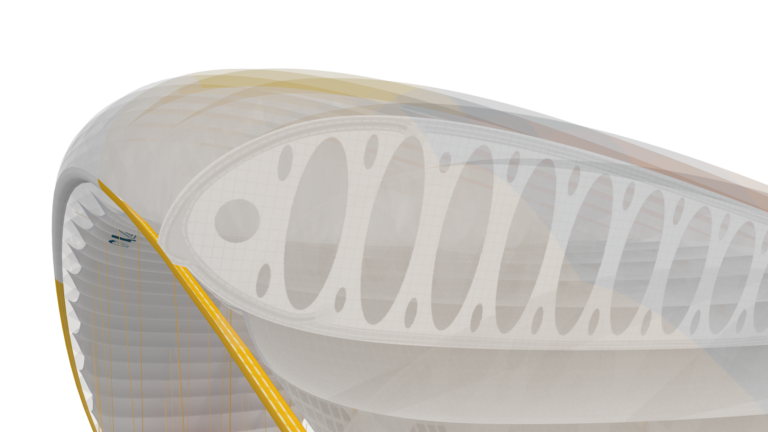
Gallery
Gallery
